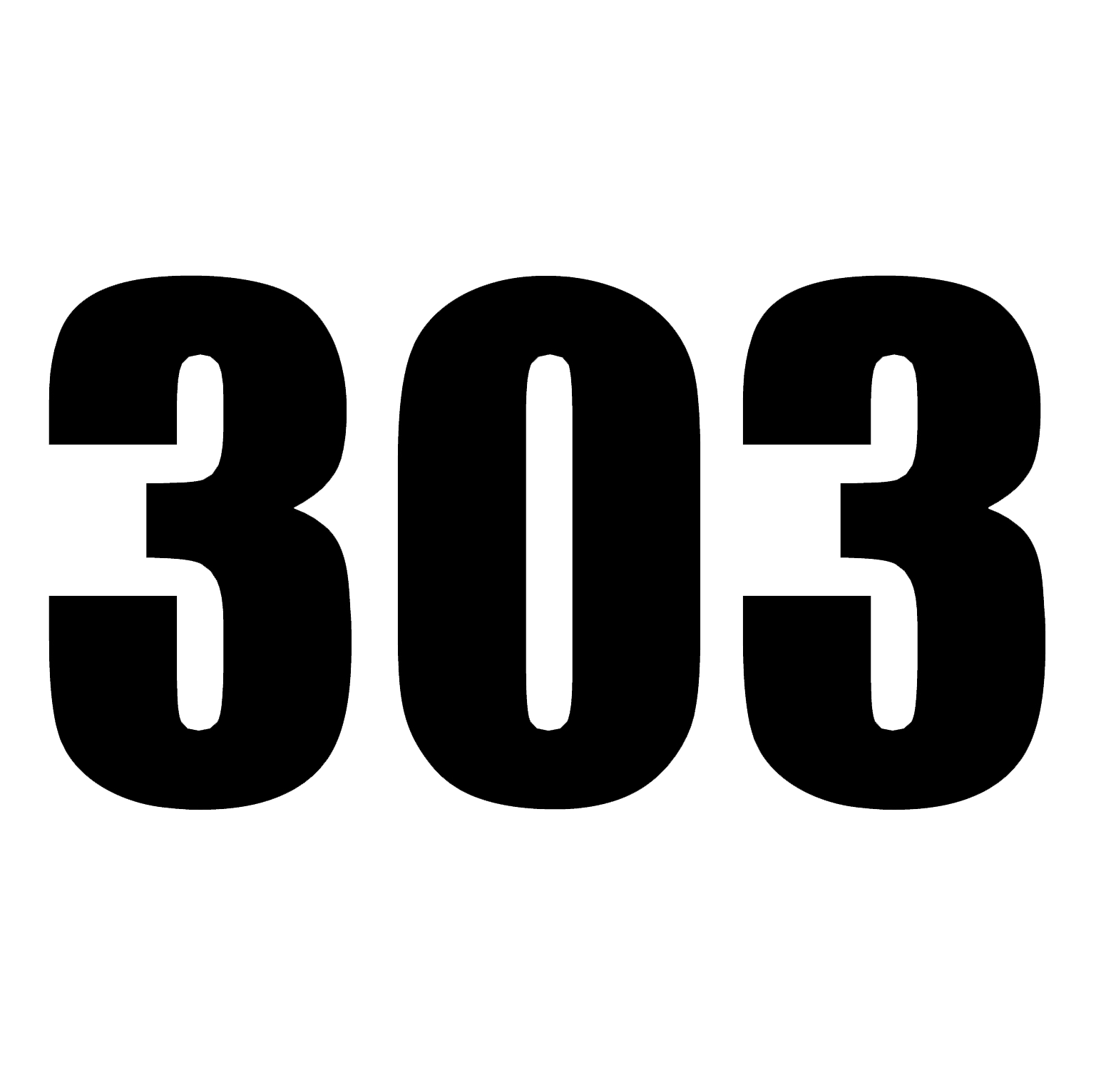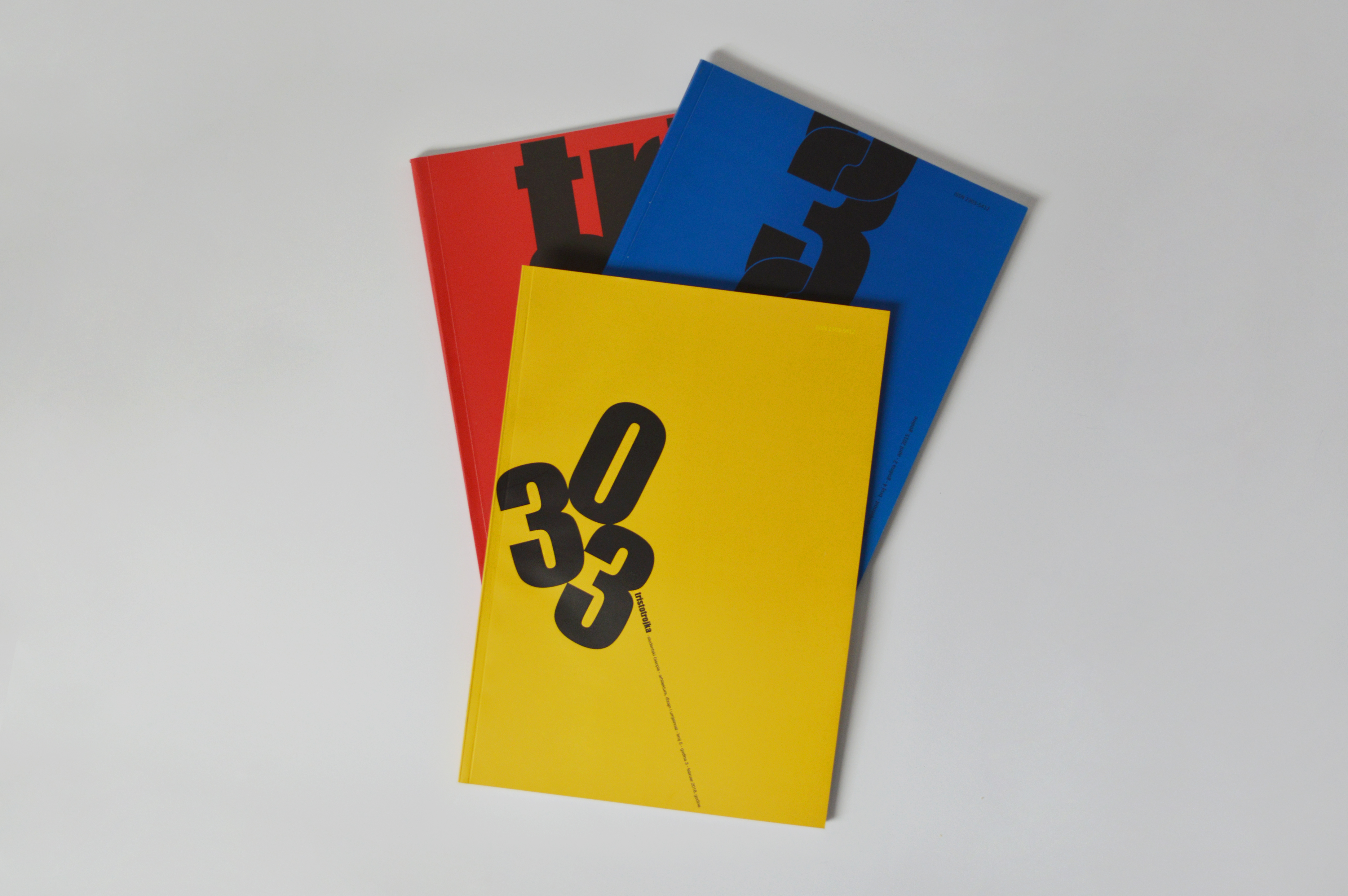
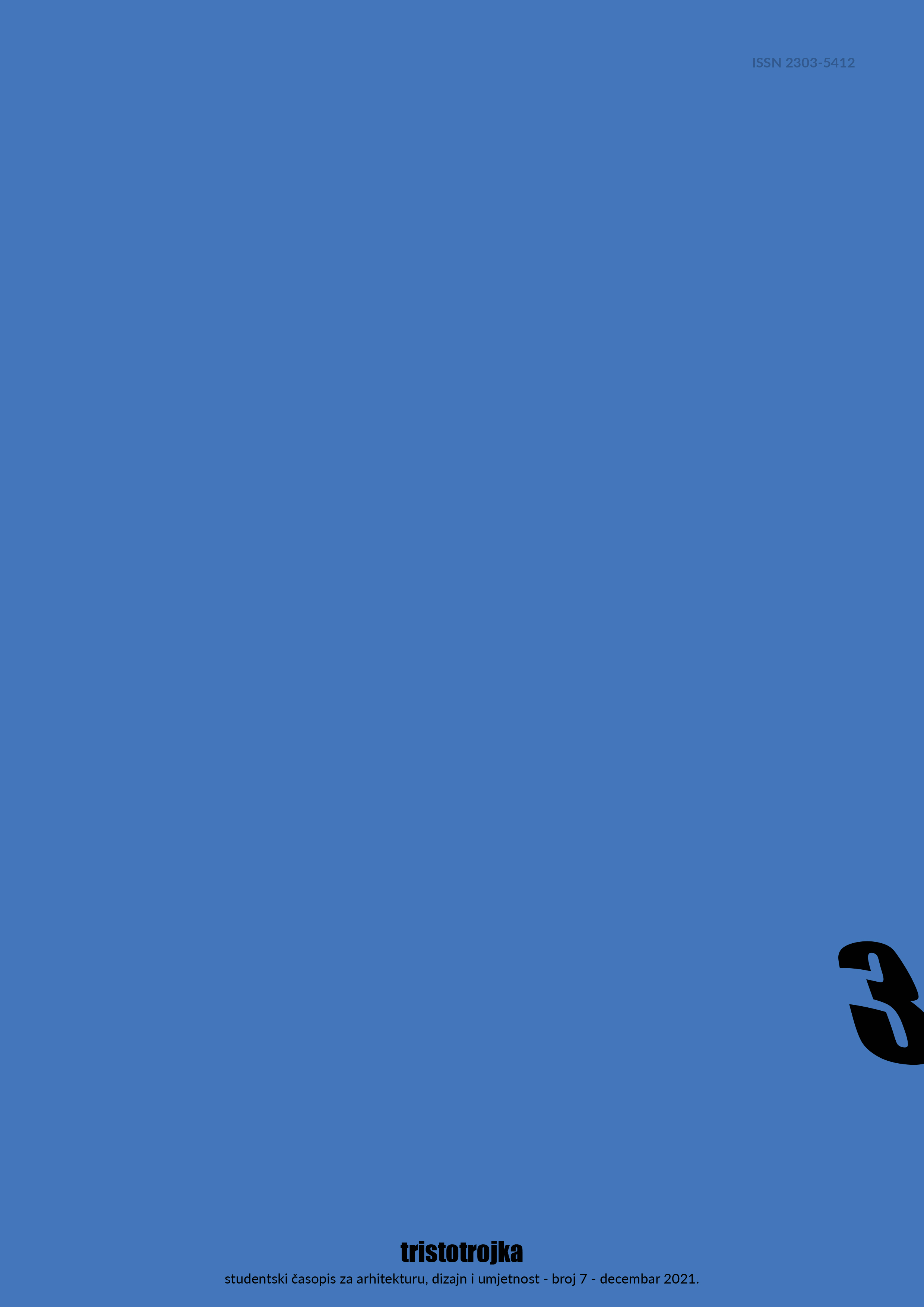
#7 | 2021
We hereby announce the sad news
of the death of a loved one
TRISTOTROJKA
(2014 – 2021)
Taking naively on her soft cover the heavy burden of the world, she succumbed to the edge of the contemporary housing issue. The last farewell will be held in editorial offices across the region.
Long live Tristotrojka!
•
“The Horsemen are drawing nearer
On the leather steeds they ride
They have come to take your life
On through the dead of night
With the four Horsemen ride
Or choose your fate and die.”
•

#6 | 2021
After several years, your editorial office finally publishes the sixth issue of Tristotrojka, and we feel obliged to mention that, due to everything that has happened in the meantime, all articles and contributions we have collected are, unfortunately, obsolete, and most authors of student projects in this issue are already graduated.
We know that you expect us to prepare new articles as soon as possible (preferably architectural-urban critique at the time of the crisis because it is currently hot). We know that there are too many individual crises that we can refer to (earthquakes, eruptions, etc.), but whichever we choose, it is known that through the prism of this topic we should certainly cover all possible spectra of the global situation in society and architecture (preferably in a methodological spirit). post-situationism and intersectionality).
We promise to focus on the unity of theme, editorial sociopolitical ideology, and graphic expression (like that of Sanroco or whatever it’s called) because we strive to be a serious magazine, not some fair and collage.
We are told that the effort to work as a non-hierarchical and international newsroom in a time of closed borders and communication apathy is not only impossible but also shamefully naive. How do we even distribute what we hold in our hands? Isn’t it time this year for the press to finally die? They suggest that we, therefore, give up further printing as soon as possible and make the next issue in the form of an audiobook and local pamphlets made of vegan paper. You already know what serious, relevant, and reputable magazines do.
For now, after the third redesign of the entire magazine, we are looking forward to this printed copy of the sixth issue.

#5 | 2018
As suggested by the design of the front page, signed by Velizar Kolarski from Novi Sad, Tristotrojka still survives!
Like the previous issues, we present student works from the faculties from the region and beyond, we provide an overview of the events on the architectural scene through reports, articles, and interviews and a wide range of topics in the field of architecture, design, and art. This issue explores, finds, emphasizes, and re-examines the characteristics specific to these fields with the focus on finding boundaries that divide these areas, and even more precisely, where those boundaries are lost.
Some of the topics you will find in this issue of the magazine are the mutual influence of fashion and architecture, architectural visualization, obscure cities, and mature modern heritage in Sarajevo; events in the world of architecture, from local and regional, such as the Sarajevo Architecture Day and the Days of Oris in Zagreb, to major events such as the Biennial of Architecture in Venice and Triennal of Architecture in Oslo; as well as interviews with well-known architects from our area and the world; like Idis Turato and Kengo Kuma.
We want to thank our old support and new partners and to announce a stronger presence in neighboring countries.
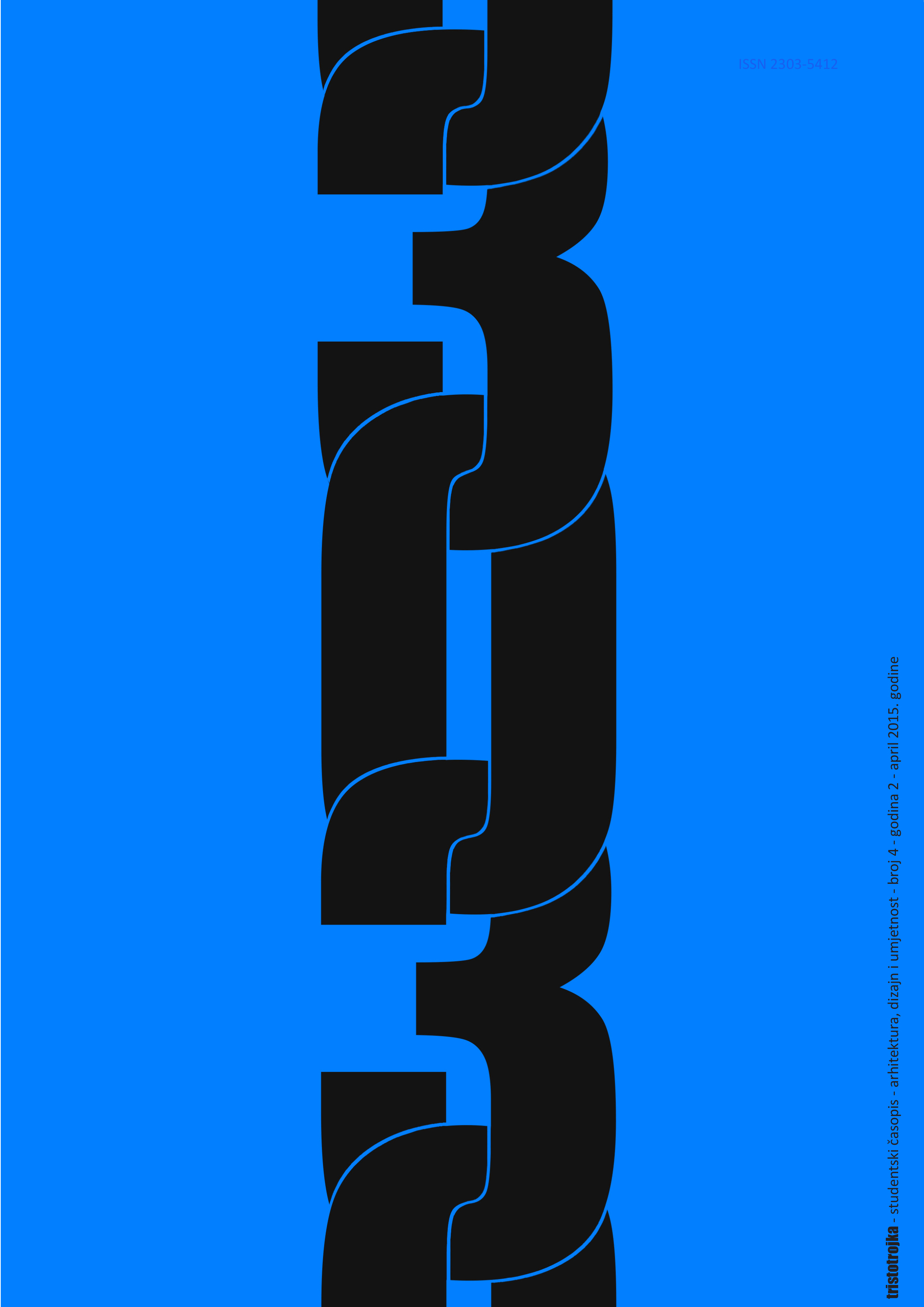
#4 | 2015
The fourth issue of Tristotrojka is the first issue in the 2015 cycle and is special because of a new editorial setup with new members of the editorial office. A number of the editorial staff, who were signed for the first three numbers, completed the studies and directed their ambitions and energy to other projects, and we wish them a lot of luck and success. This leaves us the space and the need for new associates, so on this occasion, we invite you to contact us via e-mail or message on the Facebook page if you have the desire to become an associate of Tristotrojka.
Although there has been a change in the editorial staff, this issue is not lagging behind in terms of content quality and magazine creation. As in previous issues, the content is colorful and varied. You can read a large number of interesting articles with a variety of topics, interviews with students abroad, or see our selection of current student work from the region.
Articles in the fourth issue of Tristotrojka are accompanied by drawings, which serve as a medium to convey raw thoughts when words are not enough to describe the vision. The sketch has always been an architect’s tool, for those aware of every aspect of the profession and with confidence in abilities and visions. However, in today’s time, the sketch has been pushed into the second plan, replaced by detailed and glorious 3D models and animations. Today, the special effects are much more appreciated than the thoughts expressed in the simplest media, line on paper.
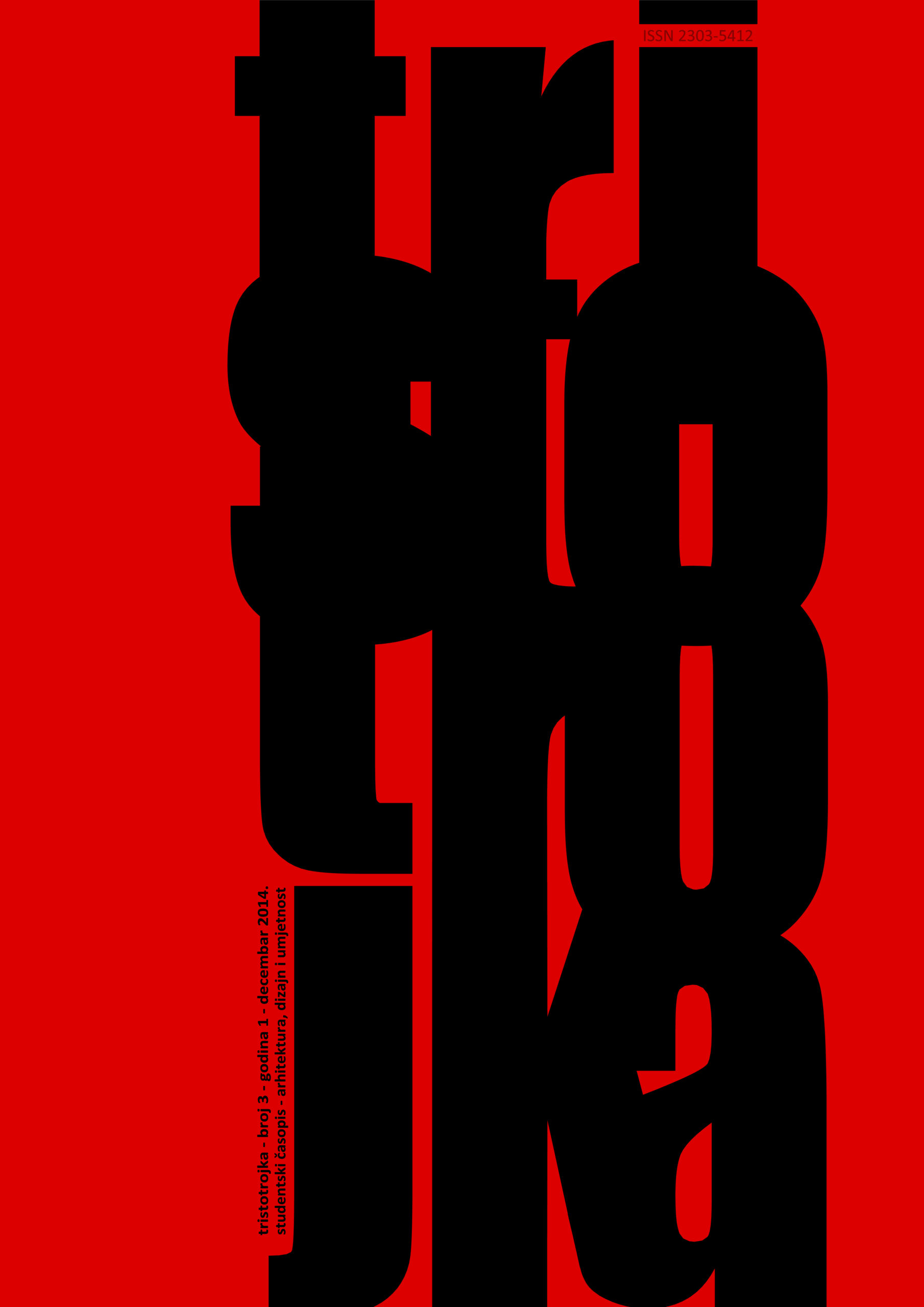
#3 | 2014
The third, red issue of Tristotrojka rounds off the first cycle, the first year, the first 300 pages of a student magazine about architecture, design, and art that everyone so faithfully supports and follows.
As in the previous two issues, Tristotrojka allocates a quarter of the space for the promotion of student works, and this time we publish projects from more cities than before. In the rest of the content, you will find interesting articles on current topics and major events as well as interviews with architects, artists, and designers. The third issue also brings some novelties, some of which are video interviews, the Tristotrojka website.
In the next cycle of Tristotrojka, the new generation of student editors is expected to maintain continuity and raise the magazine to an even higher level with many improvements. Our editorial team continuously expands the network of contacts, associates, and friends, and through work and communication students have more opportunities to co-operate and socialize with their colleagues from neighboring cities and countries. On this occasion, we would like to thank everyone for the support, messages, and donations that enable a non-commercial magazine, print in this circulation, and free copies for everyone.
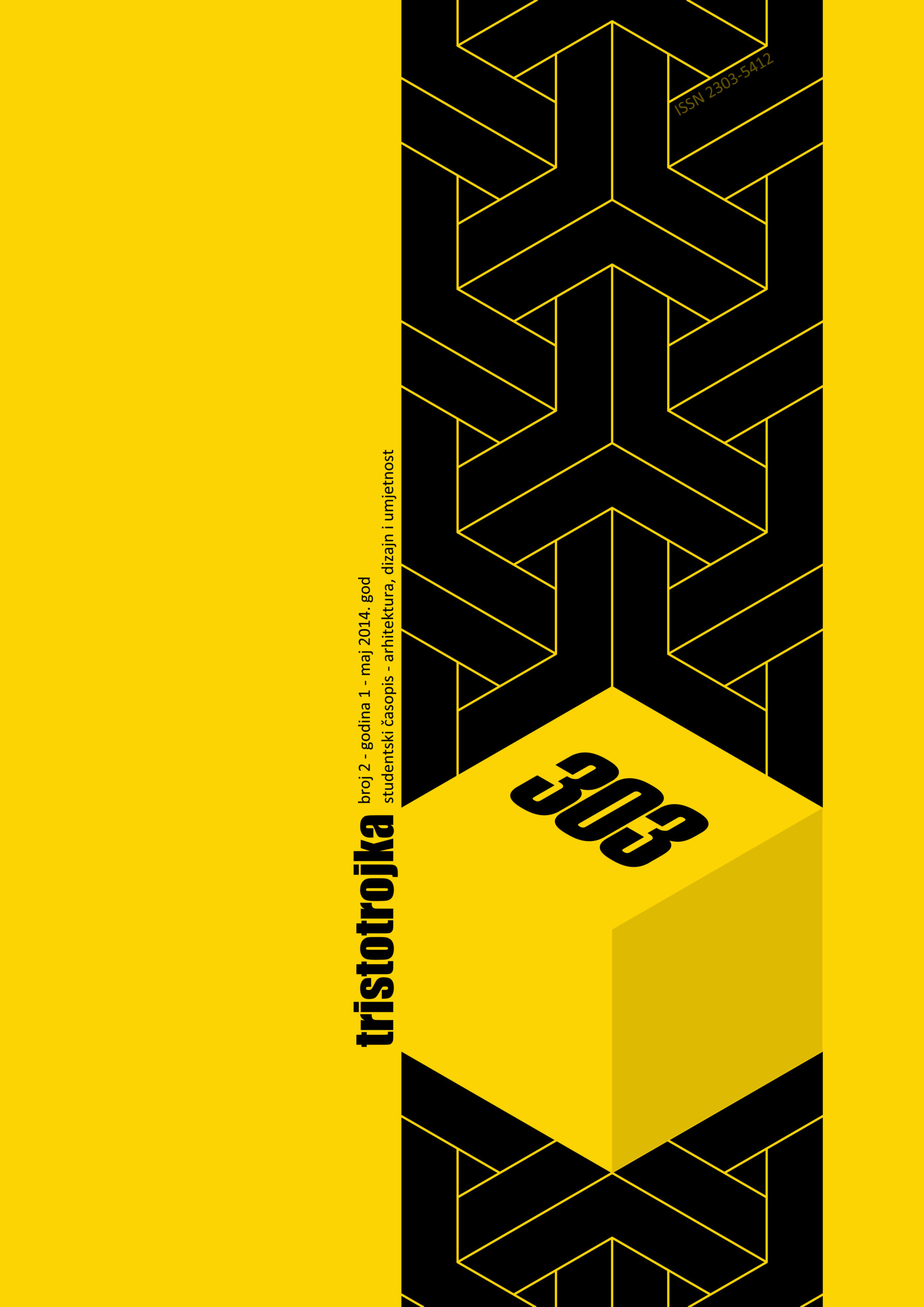
#2 | 2014
The yellow color of the spring issue of Tristotrojka symbolizes the sun, optimism, and happiness, and with it, we celebrate the success of the first blue edition. Surprised with a great interest in the magazine, not only from students of architecture, design, and art but also the professional public, as well as frequent inquiries for the possibility of an annual subscription, we emphasize that the Tristotrojka is free and we will be happy to provide a copy if you are not able to take it personally at Architectural faculty in Sarajevo.
The first cover had a simple goal: memorize the number 303 as a brand, and make the most impact, which is certainly achieved. With the cover design of this issue, we want to push two messages – with the geometry taken from the facade of the Town Hall we congratulate the city for re-opening one of its symbols, and a cube is thanks to everyone who unselfishly enabled the financing of printing the second number in a much larger circulation than the first one. To remain free of charge, cube 303 is always open for voluntary donations to ensure greater circulation and minimal advertising content.
In addition to the new number of Tristotrojka, several important events in the field of architecture took place in Sarajevo in May: the annual Collegium Artisticum exhibition, the Architectural Student Congress, the Town Hall Opening, the Days of Architecture, and the Plenum of Architects and Urbanists. The following articles were created before a natural catastrophe hit the region, but some of the texts are very relevant to the problems experienced by the inhabitants of the affected areas. The texts on unregulated construction and the winners of the Pritzker Prize draw attention to the partial reasons for the great damage caused by floods and landslides, as well as on possible solutions to the aftermath. With the combined forces, students of architecture and construction are physically and materially helping the inhabitants of the affected places these days, and we can soon expect action in the field of architecture where architects and students can contribute to temporary and permanent solutions to some of the problems.

#1 | 2014
On the south facade of the Sarajevo Faculty of Architecture building, you can always see light in the cabinet on the third floor, even when all others are off. It is, of course, classroom 303 – a special meeting place, a space for learning and socializing, the place where many models and friendships were assembled and where sleepless nights and days were spent. More popular than the silent and serious library, with a positive impact on success and quality of student life, classroom 303 served as a leitmotif to this printed space that will offer the same qualities, complemented by the content that we consider to be interesting and indispensable in developing an architectural personality.
The society gathered around this project, among other things, characterizes diversity in the area of interest, year and faculty studies, success, and ambitions, but all share a common motivation for cooperation between students of architecture, design, and art to make new acquaintances and exchange experiences. The project’s outcome is a colorful collage of information on various topics that we want to inspire for new approaches to student work and research, discover and connect with people with similar interests, and hope to attract the public’s attention to the profession in need of help.
We thank the Youth News Association for advice, and we owe thanks to the staff of the faculty who contributed to the preparation of this issue with information, advice, and moral support. We are especially grateful to all colleagues from other faculties who have participated with texts, ideas, and suggestions.
